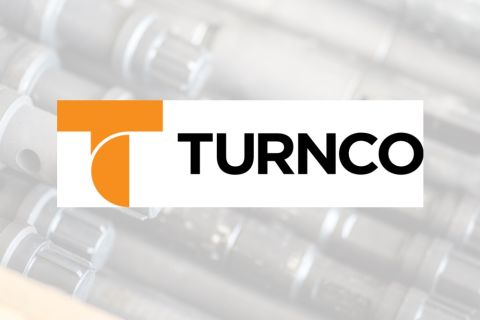By ensuring that the source and receiver locations for baseline and monitor were repeated
.jpg) |
|
| Figure 1. Variogram of geometrical repeatability (sum of difference in source and receiver locations) and seismic 4-D noise level NRMS (prestack data). (Images courtesy of Shell) |
ment in geometrical repeat-
ability. Comparison with the previous repeat survey, acquired 2 years earlier, shows a normalized root mean square (NRMS) improvement on brute stacks of between 0.1 and 0.2. After careful processing, the repeatability difference is reduced, but there is still a 0.1 to 0.15 improvement achieved by the new acquisition.
A series of repeat towed streamer 4-D “monitor” surveys was conducted over three BP-operated West of Shetlands fields (Schiehallion, Loyal and Foinaven) in 1999, 2000 and 2002. With production start-up in 1998, these early surveys clearly revealed gas breakout around unsupported producers. This information was valuable to optimize injector locations in this first phase of field development.
By 2003, pressure support had more or less been achieved in the field. The detection of the waterflood signal became of prime importance. However, simple modeling showed that its magnitude was only 50-75% of the gas breakout signal. Simply acquiring further surveys in a routine repeat 3-D manner would have compromised the detection of the 4-D effects. We needed to do something differently.
Method
Based on an analysis of the previous Schiehallion 4-D dataset (1993-2002), we could determine the variogram that relates 4-D noise levels expressed in terms of NRMS to the average shot + receiver location error on prestack data (Figure 1). Based on analog experience in other North Sea fields, we concluded that we would need to repeat the shot and receivers to within a cumulative total of less than 330 ft (100 m) in order to get a final NRMS of 0.25, which was thought adequate to see the more subtle 4-D sweep signal. This “100-m rule” became the design criterion for the 2004 4-D survey.
Planning the acquisition
All previous 4-Ds covering the three fields had the low-density 1993 exploration survey as the baseline. This time, to optimize the potential for detection of 4-D signals over Schiehallion and Loyal, we chose to use the 1996 development survey as our baseline, thereby leveraging the acquisition improvements between the 1993 and 1996 datasets and the modified acquisition parameters (source/streamer depths, fold of coverage and subsurface line spacing).
The 1993 dataset was acquired over a much larger area than the area of the 4-D. It suffers
 |
|
| Figure 2. Geometrical repeatability, 2002-1996 versus 2004-1996. Green is less than 330 ft or 100 m, while red is greater than 660 ft or 200 m. |
It was agreed that fold of coverage would be a less important factor than getting the source and receiver locations repeated as closely as possible, and as a result we chose to acquire the new data with a twin source flip-flop set-up towing 10 streamers at 245-ft (75-m) separation, compared to a single-source baseline with 10 streamers at 165 ft (50 m). Six of the 10 streamers would provide the “prime” 4-D coverage, with the four outer streamers overlapping to reduce the need for 4-D “infill” from differential feather. The cost of this strategy for Schiehallion is that only roughly half the data acquired would be used in the 4-D processing flow, both for baseline (dropping the high density) and monitor surveys (dropping outer cables).
As is the case in the majority of 4-D repeat surveys, the presence of production facilities — in this case the floating production, storage and offloading vessels (FPSOs) — necessitated the planning of undershoot data. By reviewing maps of the shot locations from the baseline surveys, it was proposed to modify the methodology for undershooting the FPSOs from the conventional two vessels with one on either side of the obstruction to various other configurations, including having the source vessel following the streamer vessel using a “push-reverse dead-head” configuration.
Acquiring the monitor survey
To assess the level of repeatability obtained during acquisition, shot/ receiver repeatability maps were generated at regular intervals. As the survey progressed, lines still to be acquired were prioritized in order to maximize the value in terms of the 4-D repeatability.
Final maps of the geometrical repeatability show a significant improvement in the level of “green” (Figure 2). The mean error dropped from 755 ft (230 m) in 2002 to 165 ft in 2004. A modal error of 98 ft (30 m) has been achieved — more or less equal to the average error expected from the geometry differences between 1996 and 2004 parameters — a very good result.
Processing the 4-D data
At each stage in the processing, we monitored the 4-D repeatability. We noted an
 |
|
| Figure 3. Maps showing seismic repeatability (NRMS) for 2002-1996 (top), 2004-1996 (bottom). Early processing is shown on the left, final results shown on the right. Value = average NRMS. (Red ~ 25%, Blue ~ 100%). |
At the binning stage, traces were selected which minimized the sum of source and receiver location differences to ensure that additional effort during acquisition was not compromised in processing.
We were unclear at the outset how much impact our processing might have on bringing the sub-optimally acquired 2002 data up to the same level of repeatability as our new 2004 dataset, as we have seen repeatability being improved through processing only, especially at the imaging and stack stages. In this case, although the repeatability was improved for both the 2002 sub-optimally acquired data and the new 2004 data, there was still a significant improvement (0.1 to 0.15) which we attribute to the optimized acquisition (Figure 3).
Conclusions
A step-change improvement in 4-D data quality has been achieved, directly attributed to the improvement in geometrical repeatability, specifically the focus on repeated source and receiver locations. Parallel processing has reduced 4-D noise levels to some degree but is unable to improve the sub-optimally acquired previous monitor data to the same standard as the most recent monitor. A contributing factor has been the fruitful technical dialogue that follows from the open and longstanding relationship between Shell and the operator, BP, in the West of Shetland area.
Acknowledgments
The authors thank Concept Systems and WesternGeco for their contribution to planning and executing the survey and to CGG, which processed the data. Thanks also to BP and its partners, Shell, Hess, Murphy, Statoil and OMV for permission to publish this article.
Recommended Reading
Turnco Buys Drill Spec Services to Enhance OCTG Capabilities
2024-04-09 - Turnco said the integration of Drill Spec’s assets will expand its service offerings in West and South Texas.
California Resources Corp., Aera Energy to Combine in $2.1B Merger
2024-02-07 - The announced combination between California Resources and Aera Energy comes one year after Exxon and Shell closed the sale of Aera to a German asset manager for $4 billion.
Pioneer Natural Resources Shareholders Approve $60B Exxon Merger
2024-02-07 - Pioneer Natural Resources shareholders voted at a special meeting to approve a merger with Exxon Mobil, although the deal remains under federal scrutiny.
Woodside, Santos Scrap M&A Talks for $52B Combination
2024-02-07 - After nearly two months of due diligence and negotiations, Woodside did not offer a firm bid price for Santos, sources said.
Which Haynesville E&Ps Might Bid for Tellurian’s Upstream Assets?
2024-02-12 - As Haynesville E&Ps look to add scale and get ahead of growing LNG export capacity, Tellurian’s Louisiana assets are expected to fetch strong competition, according to Energy Advisors Group.




